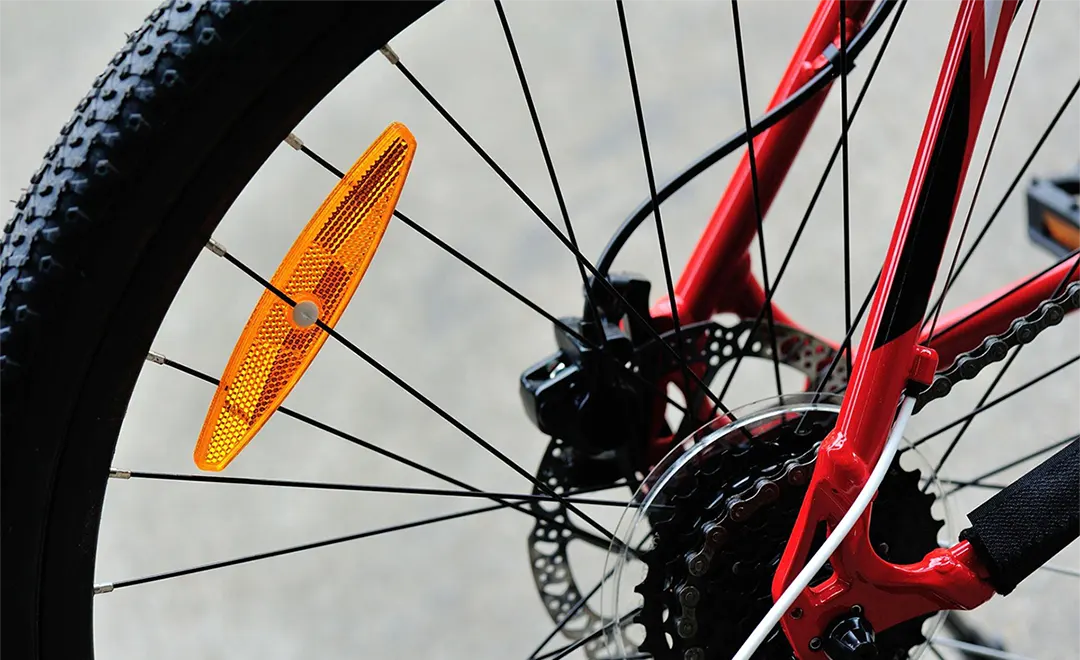
If you’re like me, you want to stay safe on the roads while also following the law.
This brings up an important question – are bike reflectors required by law?
I learned the hard way that riding at night without proper reflectors can be dangerous.
A few years back, I was cruising home after dark and nearly got sideswiped by a car that didn’t see me.
Yikes!
After that close call, I decided to dig into the laws around bike reflectors so I could stay visible while also avoiding any tickets.
In this article, I’ll walk through the current regulations on bike reflectors at both the federal and state levels.
I’ll also discuss how effective reflectors really are, where you need them on your bike, and what to look for when buying new reflectors or a bike.
Let’s dive in!
Table of Contents
The short answer is it depends!
There is no nationwide law that mandates bike reflectors.
However, many states and municipalities have their own regulations that require cyclists to have reflectors.
The requirements can vary quite a bit from place to place.
For example, California requires a white front reflector, red rear reflector, spoke reflectors, and pedal reflectors on all bikes.
Meanwhile, somewhere like Arizona has no reflector laws at all.
So whether or not you need reflectors depends on where you live and ride your bike.
The safest bet is to check your local cycling laws and equip your bike accordingly.
While there’s no federal reflector law, the U.S. Consumer Product Safety Commission (CPSC) does have recommended guidelines for bike reflector use.
These guidelines say bicycles should have a front white reflector, rear red reflector, wheel/spoke reflectors, and pedal reflectors.
The CPSC doesn’t enforce these rules, but many states and cities incorporate them into their local legislation.
Essentially, the CPSC recommendations act as model laws that help states standardize their bike regulations.
So again, it comes down to your specific location.
I’d recommend looking up “[your city/state] bike reflector laws” to get the specifics for where you live.
Better safe than sorry when it comes to avoiding tickets!
Reflectors definitely help make cyclists more visible, especially at night or in low-light conditions.
But how well do they work exactly?
Studies have found bike reflectors can be seen from around 400 feet away when illuminated by car headlights.
For comparison, simple bike lights are visible from around 1,000 feet out.
So reflectors alone provide decent visibility from behind.
However, they don’t work well at daylight or for oncoming traffic.
That’s why most experts recommend using bike lights in tandem with reflectors for maximum safety.
One issue is that small wheel reflectors are easy to overlook on a moving bike.
Large reflective sidewalls on tires are much more eye-catching for drivers.
And placement matters too. Reflectors positioned closer to the road surface are more visible than those higher up on the bike frame.
Overall, reflectors are a simple way to passively boost visibility at night.
But active lights remain the best option for truly standing out to drivers.
As an example of state-level reflector laws, let’s look at the rules in California.
The California Vehicle Code requires all bikes ridden at night to have the following reflectors:
Note the front reflector can be either white or yellow, while the rear must be red.
The spoke and pedal reflectors can be any of the three colors.
These reflectors must be visible from distances of 300 feet when illuminated by a car’s headlights.
They must also be labeled as meeting CPSC reflector standards.
California is pretty strict about its reflector rules.
Cops do ticket cyclists who ride at night without the proper reflectors.
During daylight hours, California bike riders don’t need reflectors or lights.
But it’s always safer to have them on anyway as an extra precaution.
As we’ve seen, many state and local laws require bike reflectors to comply with standards from the Consumer Product Safety Commission.
What exactly are these CPSC requirements?
The CPSC has guidelines for the performance, construction, attachment, and labeling of bike reflectors. Here are the key rules:
Manufacturers have to certify their reflectors meet these CPSC guidelines.
So checking for the labeling is an easy way to ensure you’re getting quality reflectors.
Following the CPSC standards means your reflectors will provide maximum visibility and legal compliance.
In most cases, yes – new bicycles are equipped with the necessary reflectors to meet legal and CPSC requirements.
Here’s what you’ll typically find on a new bike:
However, some high-performance bikes may only come with minimal reflectors.
And kids’ bikes don’t always have a full set.
If you want to play it safe, do a quick check that your new bike has all the reflectors required in your state.
It’s also smart to rotate the pedals to confirm the pedal reflectors are actually there and haven’t fallen off.
You can always ask the bike shop to add any missing reflectors before buying it.
Installing your own reflectors later is also inexpensive and easy.
As we’ve covered, most states require a white front reflector on bicycles.
However, some cyclists mistakenly believe the front reflector should be red.
To clear up any confusion:
Having a red reflector on the front is unsafe.
Drivers could mistakenly think they are seeing the back of the bike and pass when they shouldn’t.
White is visible and clearly indicates the front of a bicycle.
The only exception is that a few states allow yellow on the front instead of white.
But red on the front is never correct or legal.
Well there you have it – a complete breakdown of the bike reflector laws and safety recommendations.
The requirements definitely vary across states, so be sure to check your local regulations.
In general though, having a set of pedal, wheel, and frame reflectors is a simple way to improve your visibility and avoid accidents.
They’re inexpensive to buy and easy to install too.
Personally, I make sure to run both lights and reflectors anytime I’m riding at night or in low visibility.
I don’t want to risk another close call! Plus it gives me peace of mind knowing I’m fully compliant with the law.
What about you – do you use reflectors on your bike currently?
Have you ever been cited for not having them?
Let me know in the comments (or in an email)! I’d love to hear your experiences and thoughts on bike reflector laws.
